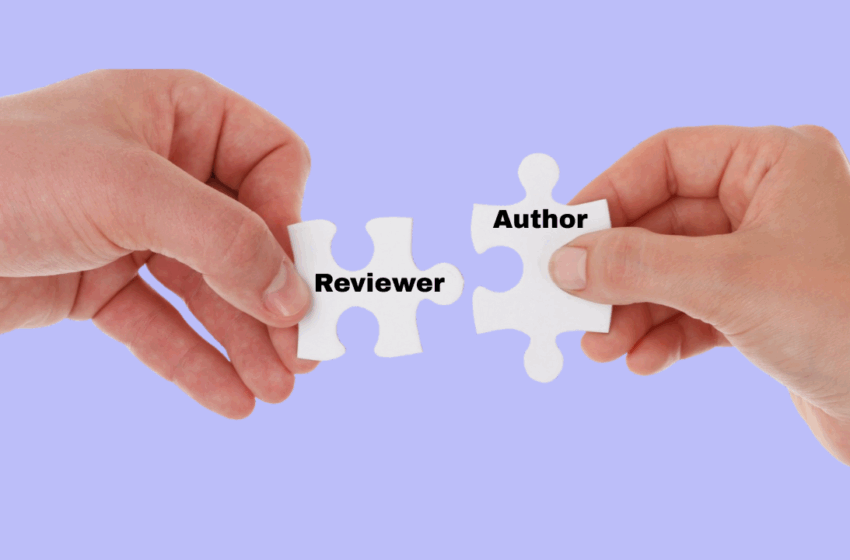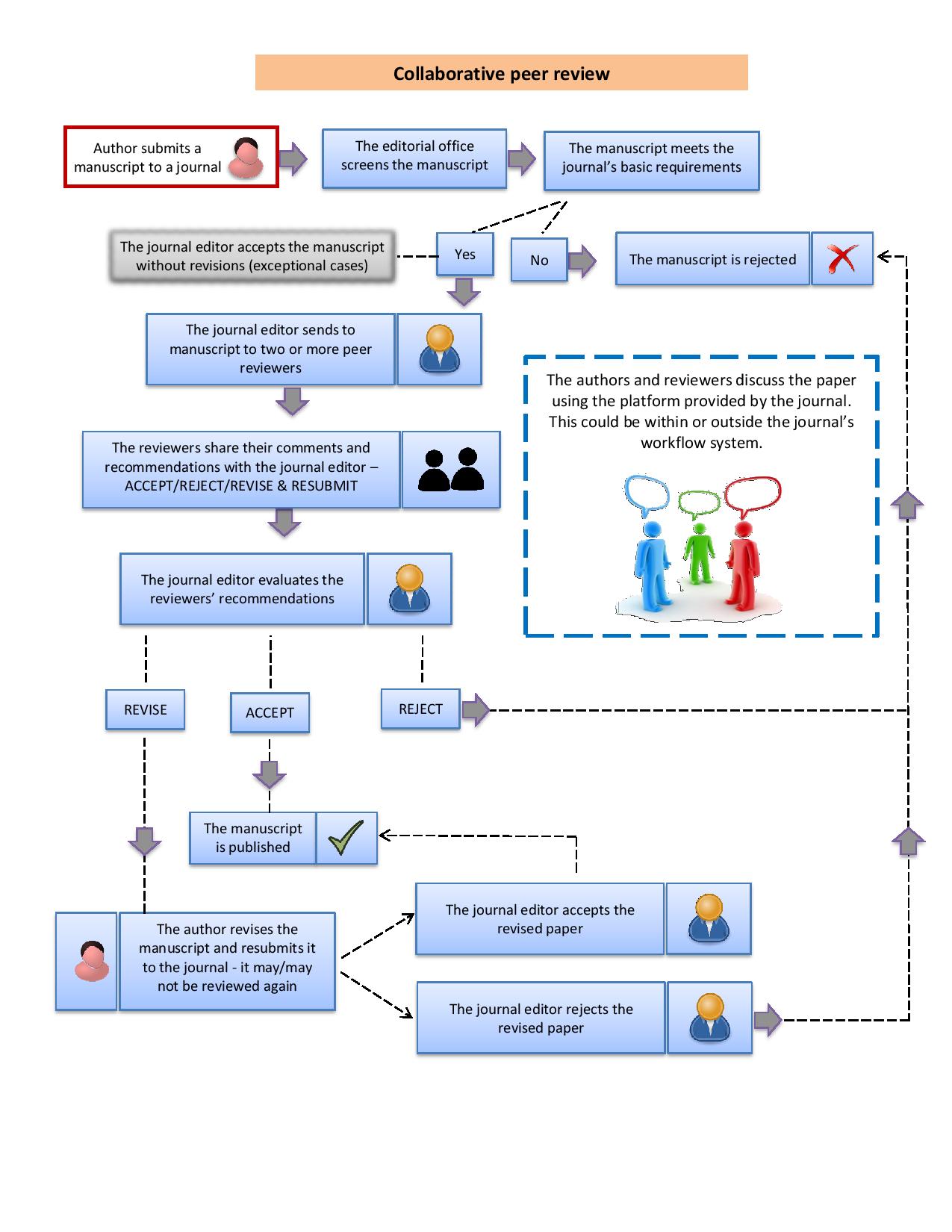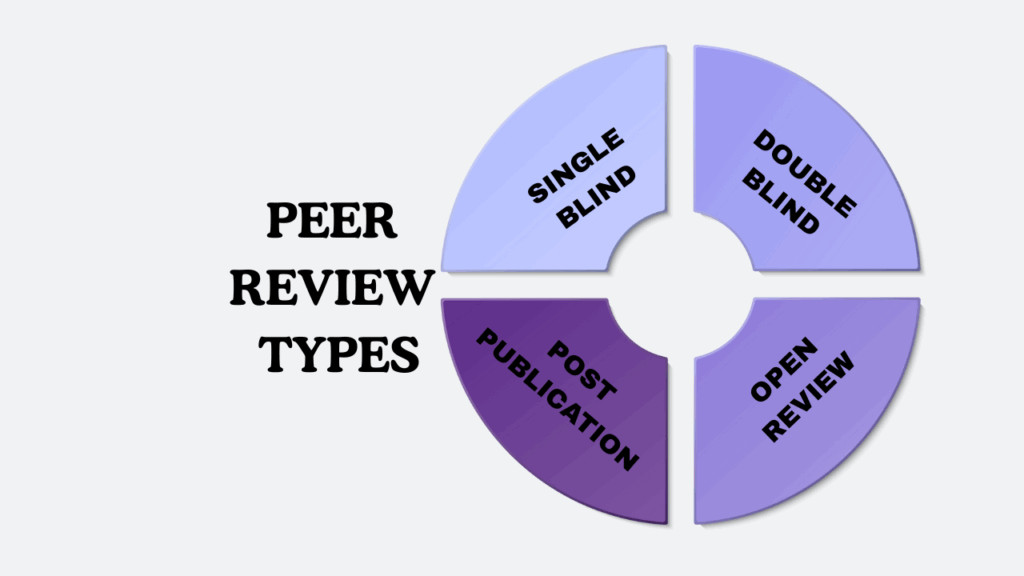Collaborative Peer Review: Explained with a Flowchart

With the peer review process rapidly evolving, new models are often developed and implemented by journals. Unlike the traditional single-blind and double-blind peer review processes, collaborative peer review provides a unique opportunity for both authors and reviewers to interact with each other during the review process.
What is Collaborative Peer Review?
Key Steps in Collaborative Peer Review Process
Benefits and Challenges of Collaborative Peer Review
Collaborative Peer Review Flowchart
What is Collaborative Peer Review?
As the name suggests, collaborative peer review enables collaboration among reviewers and, at times, with authors. In this review process, journals provide a platform for reviewers to interact with each other and reach a consensus about the quality of the research paper. This means that reviewers need not evaluate research papers in isolation, enabling them to view the contents of the paper from a fresh perspective.
In some cases, reviewers and authors collaborate to ensure that the best possible outcome is achieved through the process. Authors and reviewers discuss the paper on a platform provided by the journal, and the feedback shared is thoroughly analyzed before implementing the changes.
Key Steps in Collaborative Peer Review
1. Manuscript submission & initial editorial screening
Once authors submit their manuscript to a journal, it undergoes initial screening by the editorial team. If the manuscript is cleared for review, the editor then initiates the peer review process.
2. Reviewer assignment & collaborative platform setup
The editor identifies reviewers with expertise relevant to the research topic, determines if any conflicts of interest exist, and then sets up a platform for finalized reviewers to collaborate. For instance, the reviewers could get on a video call at a pre-decided time to review the paper.
3. Discussion & feedback exchange
Reviewers pitch in their insights and opinions about the contents of the research paper. At times, the editors may even involve authors in the discussion to maintain transparency. The feedback and comments from reviewers are addressed by the authors to improve the paper as required.
4. Revision, decision, & acceptance
Once the paper is revised, a final review is performed, and a decision is taken regarding its acceptance and publication.
Benefits and Challenges of Collaborative Peer Review
Like any other peer review model, collaborative peer review has its pros and cons.
Benefits of Collaborative Peer Review
- Holistic feedback: Collaboration between reviewers can offer cohesive feedback to authors. For instance, if one reviewer notices a flaw in the Methods section, another might recommend an appropriate solution. This type of holistic feedback can enhance the overall quality of the paper.
- Minimized bias: It is natural for peer reviewers to have certain unintentional biases when evaluating a paper. When discussing as a group, these biases can be reduced through diverse perspectives and help maintain objectivity during evaluation.
- Faster reviews: Collaboration between reviewers enables them to reach a consensus about how the paper can be improved faster than if they were working independently. This in turn expedites the publication of scientific studies, ensuring faster dissemination of crucial findings.
- Learning through mentorship: Collaborative peer review is a great opportunity for new reviewers, especially early-career researchers, to discover how to navigate the peer review process. Learning from more experienced reviewers can help young researchers, and senior researchers can benefit from new perspectives regarding the approach taken towards evaluating papers.
Challenges of Collaborative Peer Review
- Managing coordination between reviewers: Finding a suitable time to bring multiple reviewers together can be challenging for the journal editor. This could delay the review process in the initial stages.
- Handling conflicting feedback: When there are conflicting opinions about a paper, reaching a consensus among reviewers might take longer than expected. This can be a challenge for both editors and authors as the feedback may be unclear.
- Blurs the lines between authorship and evaluator: Extensive collaboration between reviewers and authors can make the journal editors question the true authorship of the paper.
All these challenges can be managed if clear guidelines are in place for the peer review process. Journal editors must schedule discussions by considering reasonable timelines and must intervene appropriately in consensus meetings to ensure a fair evaluation.
Collaborative Peer Review Flowchart
This is an excerpt from a document prepared by Editage under contract with SciELO aiming to support the elaboration of SciELO guide on types of peer review.
The flowchart outlines how the collaborative peer review process works. Feel free to download a PDF version of the flowchart and use it as a handy reference.
Want to know if your paper is ready for peer review? Get your manuscript evaluated by expert reviewers using our Pre-Submission Peer Review Service.
Originally published on September 14, 2018. Revised on October 1, 2025
A quick glimpse at collaborative peer review_0.pdf






